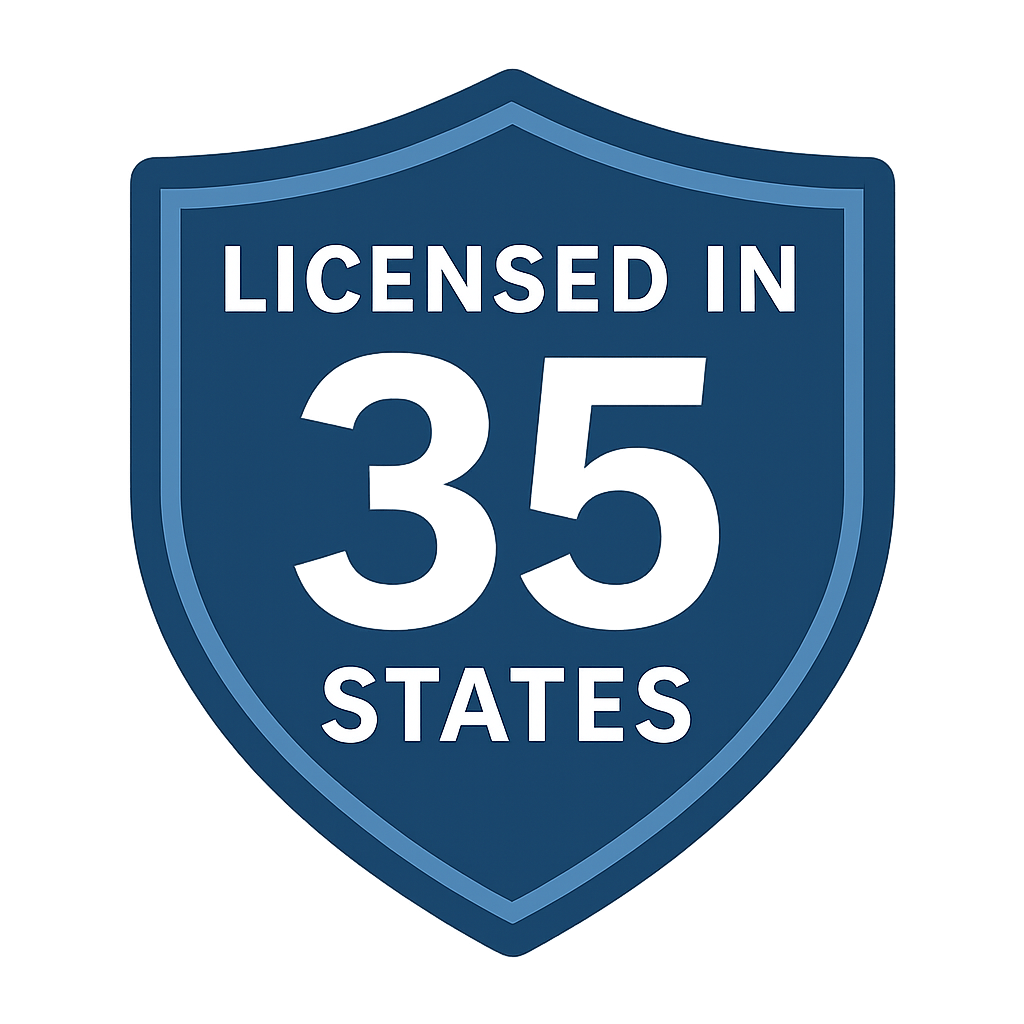Guide to Filing an Auto Claim
Learn the essential steps to file your auto insurance claim efficiently and get back on the road faster.
On this page
Overview
Immediate Steps After an Accident
Prioritize safety by moving to a secure location if possible. Exchange information with other drivers involved, including names, contact details, insurance providers, and vehicle details. Document the scene with photos of damages, license plates, and surroundings to support your claim later.
Understanding Claim Types
Auto claims fall into collision, comprehensive, or liability categories. Collision covers accidents with another vehicle or object, while comprehensive handles non-collision events like theft or weather damage. Liability addresses damages you cause to others, ensuring protection for all parties.
Navigating the Claims Process
Report the incident promptly to your insurer via phone or app for a claim number. Provide detailed evidence and cooperate with adjusters during inspections. Track progress through your policy portal to resolve payouts and repairs without delay.
Comprehensive Guide to Filing an Auto Claim
Filing an auto claim requires careful attention to detail and timely action to ensure a smooth resolution. Whether you face a minor fender bender or a major collision, understanding the process helps minimize stress and maximize coverage benefits. Start by assessing the situation immediately after the incident occurs, securing the area, and gathering essential information from all involved parties.
Your insurance policy outlines specific coverage options, including liability limits and deductibles that influence claim outcomes. For instance, if another driver is at fault, their liability insurance may cover your repairs, but always notify your own provider to coordinate subrogation efforts. Comprehensive claims often involve unique circumstances like hail damage or animal collisions, requiring thorough documentation to verify events.
Many policyholders overlook the importance of selecting a trusted repair shop early in the process. Insurers typically offer preferred networks for cost efficiency, yet you retain the right to choose any facility that meets quality standards. Keep records of all communications, estimates, and receipts to avoid disputes during settlement negotiations.
Diminished value claims address post-repair depreciation, a lesser-known aspect that can recover additional funds. Rental car reimbursement provisions provide temporary transportation, bridging gaps until your vehicle returns to service. Regular policy reviews ensure alignment with changing needs, such as increased mileage or added drivers.
Learn more about how car insurance works to build confidence in handling claims. For personalized advice, explore car insurance explained resources tailored to your situation. Comparing options via auto insurance comparison tools reveals the best fit before incidents arise.
Proactive steps like installing dash cams enhance evidence collection, streamlining approvals. Understanding state-specific regulations, such as no-fault rules in certain areas, prevents surprises. A Plus Insurance stands ready to guide you through every phase, from initial reporting to final resolution.
Claims processing times vary by complexity, but digital submissions accelerate reviews. Cooperate fully with investigators to expedite payouts. Post-claim, request a premium impact analysis to anticipate rate adjustments. This knowledge empowers informed decisions, turning potential setbacks into manageable experiences.
What should I do immediately after a car accident?
Ensure everyone is safe and call emergency services if injuries occur. Move vehicles to a safe spot and exchange details with other drivers. Take photos of the scene and contact your insurer right away to start the claim process. Documenting everything helps build a strong case for approval.
How soon must I report an auto claim to my insurer?
Most policies require reporting within 24 to 72 hours of the incident. Delays can complicate investigations and risk denial. Prompt notification allows adjusters to gather fresh evidence. Check your policy for exact timelines to stay compliant.
What documents are needed to file an auto insurance claim?
Gather your policy number, police report if applicable, photos of damage, and witness statements. Include repair estimates and medical records for comprehensive support. These items verify the claim details accurately. Organize files digitally for easy submission.
What is the difference between collision and comprehensive claims?
Collision covers accidents involving another vehicle or object you hit. Comprehensive handles non-collision events like theft, fire, or vandalism. Both require paying your deductible first. Understanding these distinctions ensures proper claim selection. For more, visit difference between comprehensive and collision.
Does liability insurance cover my vehicle damage?
Liability pays for others' damages if you are at fault, not your own repairs. You need collision coverage for personal vehicle fixes in at-fault scenarios. This separation protects against lawsuits effectively. Review your limits regularly for adequate protection.
Can I file a claim for hit-and-run incidents?
Yes, uninsured motorist coverage often applies to hit-and-runs. Provide police reports and scene photos as evidence. Insurers investigate to confirm details swiftly. This provision safeguards you from unidentified drivers.
What if the other driver is uninsured?
Uninsured motorist coverage steps in for their liability. File promptly with your details and incident report. Adjusters handle recovery efforts behind the scenes. This ensures you receive deserved compensation without pursuit hassles.
How long does an auto claim take to process?
Simple claims resolve in days, while complex ones may take weeks. Factors include damage extent and investigator availability. Track status via your insurer's app for updates. Patience aids in thorough assessments.
Do I need a police report for every claim?
Reports are mandatory for accidents with injuries or significant damage in most states. Minor incidents may not require one, but they strengthen your case. File immediately at the scene when possible. Consult insurance requirements by state for local rules.
Can I choose my own repair shop?
Yes, you have the freedom to select any qualified shop. Insurers recommend networks for guaranteed work, but alternatives work too. Get multiple estimates for comparison. This choice maintains control over quality.
How does the deductible affect my claim payout?
You pay the deductible upfront, and the insurer covers the rest up to policy limits. Higher deductibles lower premiums but increase out-of-pocket costs. Choose based on financial comfort. Balance saves money long-term.
Will filing a claim raise my insurance rates?
At-fault claims often lead to increases, but not-fault ones may not. Discounts for safe driving can offset hikes. Shop around post-claim if needed. Explore how to lower your car insurance rates for strategies.
Does my policy cover rental cars during repairs?
Rental reimbursement adds this benefit for covered claims. Limits apply to duration and vehicle type. Confirm inclusion before filing. It eases mobility disruptions effectively.
What is a diminished value claim?
It compensates for your car's reduced market value after repairs. Professional appraisals quantify the loss accurately. Submit after primary repairs complete. This recovers hidden financial impacts.
Can I get reimbursed for towing fees?
Towing coverage includes this if listed in your policy. Provide receipts from licensed services. Limits cap amounts per incident. It covers essential post-accident transport.
What if I disagree with the claim settlement offer?
Request a detailed explanation and provide additional evidence. Escalate to a supervisor if needed. Appraisal clauses allow independent reviews. Persistence yields fairer outcomes.
How do I appeal a denied auto claim?
Review the denial letter for reasons and gather counter-evidence. Submit a formal appeal in writing promptly. Involve your agent for support. Many overturns succeed with solid documentation.
Is legal help necessary for complex claims?
Attorneys assist in disputes involving serious injuries or large sums. Initial consultations often cost nothing. Weigh benefits against fees carefully. They navigate intricacies expertly.
How can I avoid common claim filing mistakes?
Admit no fault at the scene and report all details accurately. Avoid hasty settlements without full assessments. Keep backups of submissions. Vigilance prevents denials effectively.
What role does a dash cam play in claims?
It provides irrefutable video evidence, speeding approvals. Footage clarifies fault disputes reliably. Affordable models integrate with apps seamlessly. Investment pays off in resolutions.
Should I update my policy after a claim?
Yes, reassess coverage gaps exposed by the event. Add riders like roadside assistance if missing. Annual reviews maintain relevance. Adjustments align with evolving risks.
How does weather impact auto claims?
Storms trigger comprehensive claims for debris or flooding. Document conditions thoroughly for validation. Seasonal preparations mitigate damages. Proactive measures reduce filing frequency.
Can multiple claims affect future coverage?
Frequent filings may lead to non-renewal or higher rates. Space out minor ones if possible. Loyalty discounts reward low activity. Balance needs with long-term costs.
What is subrogation in auto claims?
Your insurer recovers paid amounts from the at-fault party. It happens after your settlement automatically. No action required from you typically. This recoups funds efficiently.
Comparing Claim Filing Methods
Choose the best approach based on your situation for faster resolutions.
Phone Reporting
Quick verbal submission with immediate guidance from agents.
Online Portal
Upload documents securely and track progress 24/7.
Mobile App
Real-time photo uploads and AI-assisted damage estimates.
Last Updated on by Shawn Christie




